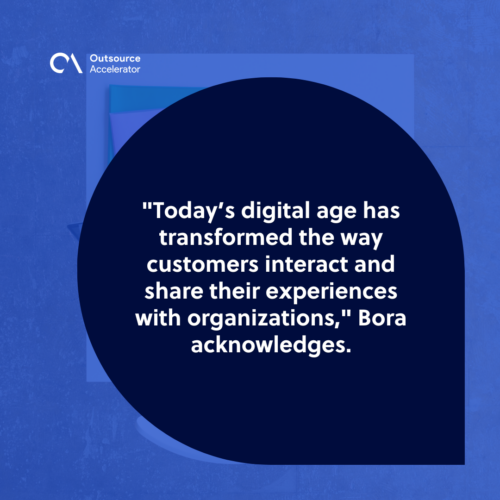5 Tech-driven CX insights to pair with live support to delight your customers

5 Tech-Driven CX Insights to Pair With Live Support to Delight Your Customers is our three-part series on how new technologies are affecting one of the oldest aspects of business – client care. This is part one. Check back next week for part two on Friday, October 18.
Chatbots. Artificial Intelligence. Omni-channel algorithms. Integrated Voice Response (IVR)-enabled phone support. Robot butlers.
No, we haven’t started a game of “one of these things is not like the others,” or “buzzword bingo”. Every item on that list is an example of the ways that customer experience (CX) is changing. Astute readers have probably already realized that what each has in common is that it lives happily under the sometimes ominously-wielded umbrella of “automation”. That is, all the ways that machine-driven support is purported to be replacing human tasks and labor.
Even or rather, especially, the robot butler (his name is YO2D2, by the way).
What you should know about the future of your customer experience strategy
The most popular way of exploring the changing face of tech-driven customer service seems to be to wonder if there is no job that automation can’t — and eventually won’t — do better and faster than a human can. A more thoughtful approach, however, is to look at how humans can leverage the rapidly-evolving landscape of automated support as tools to provide better and better customer experiences to other humans.
More: People + Technology: Why Humans Still Matter In The Age Of Automation
To answer that question, we turned to Personiv’s own Vishal Bora — Executive Vice President and Site Head in Gurugram, India. Anyone who knows Vishal also knows that this topic is right up his alley; with over 20 years of experience managing the people who manage customer concerns, Bora is a self-professed techie and calls himself a “firm believer in the good this disruptive technical era can do,” which makes him both passionate about adopting new technologies and keeping the clients and customers Personiv serves delighted with a human touch. Find out why he thinks the former can and should be used to enable the latter.
Automation is changing customer support, but customers still prefer a human voice
There’s a reason the new slew of options when it comes to customer support tends to make news: it’s exciting, and it’s changing every day.
It’s easy to forget that until about 46 years ago, people had four options if they needed to talk to a business or merchant: in-person, via telegram (telegram!), by mail and eventually over a landline telephone. That 46 year figure? That really only acknowledges the wide adoption of fax machines. Communication as we know it, with all of its infinite possibilities, developed extremely rapidly and is still so young. High speed internet is only 20 years old! Text messaging? 27. Text messaging as we know it? Seven.
“Today’s digital age has transformed the way customers interact and share their experiences with organizations,” Bora acknowledges. He isn’t just referring to the devices and channels we use, either: “The success of real-time messaging, chatbots, artificial intelligence and the growing emphasis on self-service has completely changed the customer engagement landscape!”
As someone who has seen the increasingly exponential expansion of technology’s role in customer service first hand over the past two decades, Bora urges providers to stay on top of industry trends: “It’s become imperative for companies to recognize and adapt these new-age dynamics, so they remain competitive in today’s fiercely fought market.”
But, he goes on to say, that doesn’t mean that customers only want the next and newest technology when it comes to support and customer care. What’s often lost in the conversation about tech-driven CX is the fact that customers don’t just eschew traditional channels every time they have a shiny new option.
On the contrary, Bora explains, “Customers — by a considerable margin — still prefer a phone number they can call with a human who picks up on the other end when it comes to customer service. Most noteworthy of all,” he continues, “is that voice remains the top channel even for younger customers who have ready access to web-based communication services.”

Key statistics to consider for a more effective tech-driven customer experience strategy
The research backs Bora up. A 2018 survey conducted by New Voice Media found that a full 75 percent of respondents preferred a live agent over a chatbot, and the more sensitive or complex an issue was, the higher that number rose. 91 percent of respondents said they wanted to interact with a human being and not an algorithm when seeking tech support and troubleshooting and 82 percent of customers who banked with large institutions said live support was a must.
More: How to Ensure Your Financial Information is Safe When Outsourcing
Even when the numbers are more conservative, they still add up: 51 percent of people said they thought speaking on the phone was the fastest way to resolve an issue, according to research done by Statista, while 39 percent felt that interacting with a live agent on social media was the most expedient.
HubSpot’s research team said customer preferences can be broken down pretty evenly across channels, but even in this scenario, the lion’s share of customers wanted to talk to a live agent, they just wanted to do it over a channel other than voice, like email.
Customers — by a considerable margin — still prefer a phone number they can call with a human who picks up on the other end when it comes to customer service.
Of course, this doesn’t mean that chatbots and the trend toward implementing self-service are passing fads. What it suggests instead is that for quick and simple customer concerns, a friendly chatbot or easy-to-navigate IVR are the go-to options. Develop and implement them, or you’ll lose those customers to organizations that already have.
But for the customers that need more robust help — solutions to complex issues or a thoughtful, empathetic response to a concern or complaint, for instance, a human touch (or voice) is key. A lot is riding on it, in fact: HubSpot’s research found that it only took a single instance of poor customer service for consumers to decide to work with a competitor instead.
Tech-Driven CX Insight #1: Technological advances in CX are going to keep coming, and coming fast. Customers will embrace these new options and the bar for prompt, quality interactions will continue to rise because of it, so providers need to stay ahead of the curve to stay competitive. It’s a mistake, however, to assume any one of them will replace traditional channels when there’s every indication that the opposite is true.
“In this new world of customer service,” Bora concludes, “the focus has shifted from ‘what’s now?’ to ‘what’s next?’, so we have to constantly be evolving our operating model. That said, voice channels provide a degree of accountability in a digital world where that can be hard to find and we should strive to make ours as trustworthy and frictionless as possible.”
5 Tech-Driven CX Insights to Pair With Live Support to Delight Your Customers is our three part series on how new technologies are affecting one of the oldest aspects of business – client care. Check back next week for part two on Friday, October 18.
Want more CX Insights? Take a look at our whitepaper, Tech-Driven CX + Live Support: 4 Ways to Get it Right to learn how to master the art of providing exceptional customer care, then head to our Customer Care Page to learn about Personiv’s unique process for providing businesses with second-to-none CX talent.
You can get a firsthand look at our Gurugram site, to see where Vishal Bora makes customer support “magic” happen with this video tour:
Vishal Bora is Personiv’s EVP and Site Head in Gurugram, India. Vishal brings over 20 years of extensive experience and deep domain expertise in the areas of sales, business development, customer experience, and global operations to the role. When he’s not working hard for Personiv’s clients, you’ll find him watching suspense and action movies, playing games with his two sons, and reading project management books.
You can connect with Vishal on LinkedIn, or on Twitter at @BoraVishal.







 Independent
Independent




